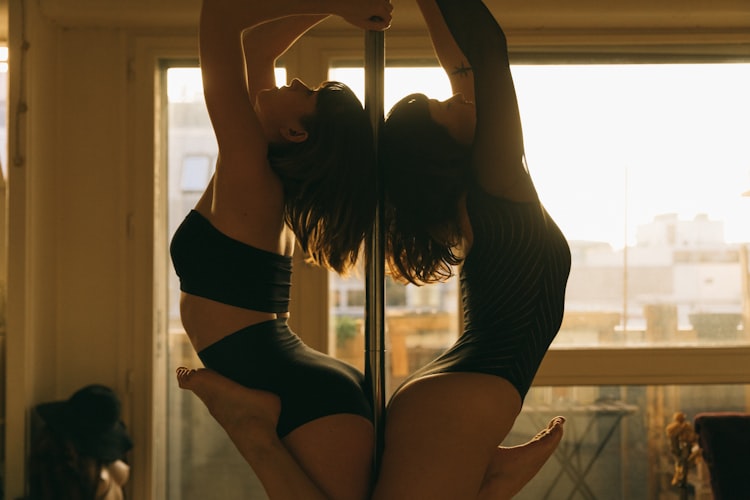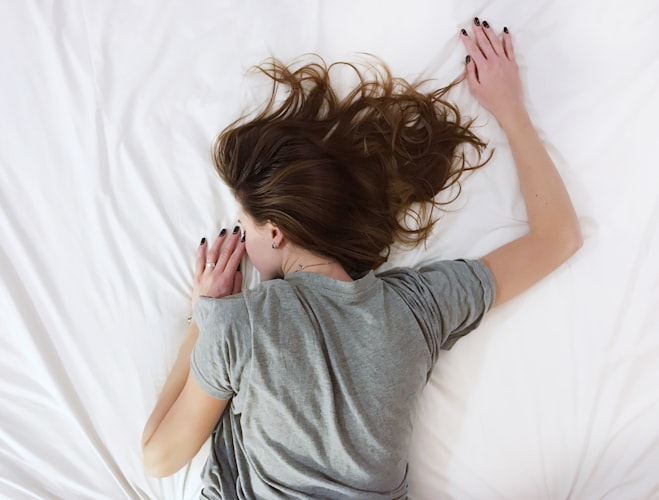How to Preserve Your Body for Pole

My first podcast interview!
Krystle Celis
Friday, May 1, 2020
How to Preserve Your Body for Pole
I’ve been fortunate to have been able to pole dance the last 5 years without sustaining a serious injury. As I’ve gotten more advanced and especially at the peak of my times competing in amateur pole events, I was able to maintain a healthy body. I found pole a bit later in my life during my late 20s and really got into it in my early 30s. I also have started focusing more on low flow pole and exotic pole, which has been a lot kinder to my body versus aerial, power pole dancing. I wouldn’t consider myself a power pole dancer but I definitely want to be able to still do some aerial tricks. Just keep in mind the kind of #polegoals you have in mind when planning on your training week and how these recommendations line up with your personal goals and schedule.
A lot of my preservation stems from being “older” and also having a background in kinesiology and sports medicine. I’ve worked with athletes and performers and even with special working populations in the industrial and entertainment settings that have physical labor involved with their jobs. I also am able to put in my own perspective of being a dancer, pole dancer and aerialist and have experienced being in the role of a student, teacher and competitor. All of these experiences, along with my education have helped me develop my own routine to help with prevention of injuries when I pole dance.
A brief overview of the tips I'll be covering in this post:
- Make sure you get a sufficient warm up in.
- Cross train with another form of exercise and conditioning to maintain strength and to help balance both sides of the body.
- Give yourself rest days.
- Ice, ice baby!
- Self care with self-myofascial release and massage.

Warming up
First, before any type of physical activity takes place, most people know and SHOULD warm themselves up. Just like we warm up our car engines before driving a long distance, we must prepare our bodies for the physicality of pole dancing. I was blessed to find a studio that really integrated a warm up that flowed really well together, mixing the aspects of yoga, Pilates and dance in their “moving flow.” Even if it’s doing a set of jumping jacks, high knees and butt kicks to the duration of a song, which has been a great way to work on cardiovascular endurance which is also very essential to pole dancing.
Warming up should consist of exercises that get your heart rate elevated and breaks you out into a sweat. The whole point of a warm up is to warm up the body, especially the muscles and to prevent muscular strains. Muscular strains, such as the common hamstring strain, occurs from performing an explosive movement like jumping, running, sprinting. This typically occurs in dance when a performer extends their leg in a quick explosive movement, fully straightening both their supporting leg and kicking leg (called a grand battement in ballet). Creating movements that require a quick burst of energy while extending a limb requires that the muscles are properly warmed up.

Cross training
I’ve also realized that because pole is the type of sport that can heavily be performed on one side (typically the dancer’s dominant side), there may be an imbalance of strength in the body. This is where cross training with another form of exercise could be beneficial with helping to increase overall strength, but to also help prevent injury. I noticed a lot of my classmates were training in crossfit, pilates, yoga, some form of cardio (running or swimming) and even doing basic gym workouts. Keep in mind physical fitness consists of different components of fitness.
To address strength, a performer/ athlete should be doing some type of weight training, whether it’s lifting weights regularly at the gym, doing crossfit or pilates. For me personally, having my dance background made me feel more comfortable and acquainted to cross training with pilates. Pilates strengthening helped with stabilizing smaller muscle groups that weren’t commonly addressed with the typical gym workout. I also liked that pilates addressed the idea of “lengthening a muscle” which aesthetically sounded more appealing to a dancer/ performer versus the idea of “bulking up.” (Keep in mind this is also affected by diet! Definitely consult with a nutritionist or other medical professional to get more information on an appropriate training diet.)

Rest days
Rest days are also vital for pole. Depending on how rigorous the training is, it’s important that if there are consecutive days of back to back poling, a day of rest is scheduled. There is so much demand from poling where the performer has to endure being able to lift their own body weight as high as 12 feet or more in the air. And that could even require holding a pose for a couple of seconds as one transitions into another move to help them descend down the pole. I know how difficult it can be to say no to the idea of pole training, especially because it’s such an addictive sport. But just like any other sport, the athlete needs to have some time to rest and recover in order for the muscles to heal. Just like with weight lifting, a similar idea can be thought of with pole. As one goes through lifting their body weight up along the pole, just like lifting a weight, micro-tears occur on our muscle fibers. This is a part of the physiology of our muscles and this is why our body needs to be able to repair.

Icing and cold therapy
Now a typical rule of thumb when using ice or heat is that ice is applied after physical activity and heat is best before activity. When I was working my internship hours with collegiate football, after 2 hours of practice, I would make 20 or more ice bags to wrap on these athletes. I even helped prepare ice baths for these athletes to sit in for 2-10 minutes long. The idea of ice (also known as a form of cryotherapy) is it helps reduce inflammation that occurs as well as reducing pain. During my time competing, I would stand in a cold shower for the length of my competition song. This felt horrible in the moment, but after a while I was numb to the temperature. In fact, my body felt much more refreshed and less sore. If you can’t bare with the thought of submerging your body into cold water, the alternative is a good, ol’ ice bag that you can apply to your sore muscles after class or practice.

Self massage
Lastly, some type of self-myofascial release or massage is super beneficial to help preserve the body. Again, with pole dancing, the muscles will get very tense and the body will feel very sore. Massage is helpful with breaking up the muscular tissue so that it can “smoothen” out. When the muscles are too tight like a ball, this will restrict the ability to have full range of motion. That’s why I typically would try stretching and using a foam roller or massage stick after my pole classes. I also tried to get professional massages at least once a month, especially when I was training pole more regularly and during competition season.
The important thing to note is massage will be helpful with releasing tension, however depending on how aggressive the massage is, the body may feel even more sore after. This is why it’s important to be mindful of when scheduling for a massage, especially if there are time sensitive issues at hand. For example, if you have a competition coming up, try to make sure to schedule the massage a couple of days prior, allowing for some recovery time so that your body doesn’t feel too sore.
These 5 different techniques for self care have helped preserve and sustain my body so that I can continue to pole injury free. This is my 5th year of pole dancing and I am looking forward to the many years ahead of me to be able to perfect this craft. Everyone will formulate what works best for the bodies and part of the process is figuring out what works best for you, The next part would be making sure to be consistent with this process.
Happy pole dancing!